SUNDAY JOINT, 5-5-2024: GIVE MY CREATURE LIFE! SURFING AND ANIMATION

Hey All,
Surfing and animation came together over 100 years ago, peaked in the 1970s, then mic dropped so hard in 2007 with Surf's Up that whatever comes next will be a postscript. This week's Joint is a starter pack of surf animation, arranged oldest to newest. All the titles here are now posted on EOS. I've added a few comments, below, but it's probably worth saying up top, and the point is so obvious it may not be worth stating at all, that surfing animation, like surfboard-making, long ago left the hands-on DIY realm—of being something you'd create at your home address, in a garage or spare room—and has since for better and worse been industrialized. There are probably still homespun projects out there (similar but almost certainly inferior to Mark Sutherland's 1989 surf-noir mini-masterpiece Dream), but we're two generations removed from a time when an animated short could be plugged into a feature-length surf movie and wind up being the buzz moment of the evening. Don't get me wrong. Surf's Up, in my opinion, lives at the tippy-top of the surf-cinema pyramid. But it cost a $100 million and took 100 or so trained professionals to make, while Arne's Wong's Acapulco Gold was literally made from stoke and smoke.
Here's the list:
"Bobby Bumps: Surf Rider" (Earl Hurd, 1917)
"Hawaiian Holiday" (Disney, 1937)
Surfing Snoopy, from "Charlie Brown's All-Stars" (Charles Schulz, 1966)
"Acapulco Gold" (Arne Wong, 1971)
"Karma" (Arne Wong, 1972)
"Secret Spot" (John Lamb, 1974)
excerpt from "Rocket 88" (John Lamb, 1975)
"Hot to Trot" (Tony Edwards, 1977)
"Surf Wars" (Steve Lomas, 1978)
opening to "Fantasea" (Rick Sharp, 1979)
"Broderick" (Ormondroyd and Nelles, 1980)
opening to "Off the Wall 2" (Mickey and Natal, 1983)
"Dream" (Mark Sutherland, 1989)
shaping lesson from "Surf's Up" (Sony, 2007)
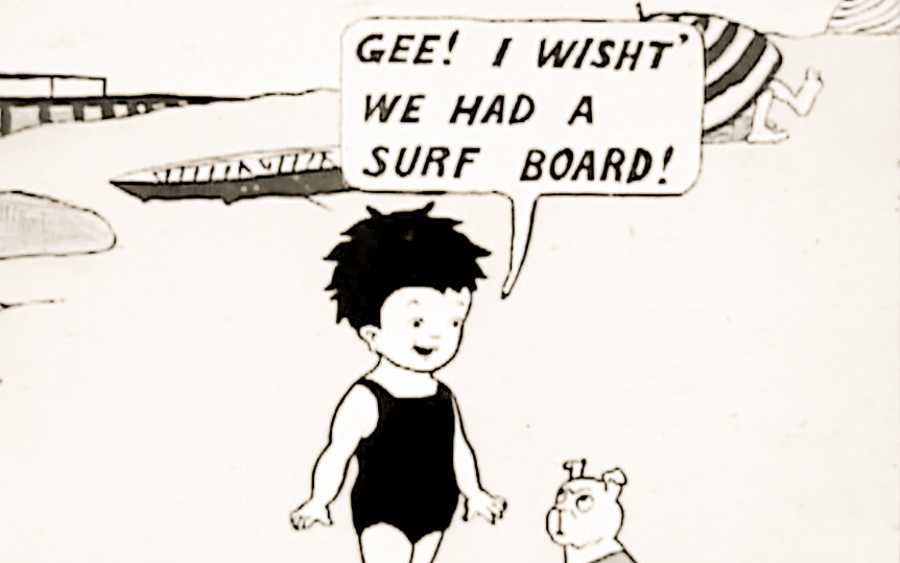
The Bobby Bumps short takes us all the way back to the origins of moviegoing as a national craze, as the first pay-to-watch theater opened in 1905, while the racist masterpiece Birth of a Nation, America's original blockbuster, came out in 1915. Animated shorts played before a feature as a kind of warm-up act, and Bumps creator Earl Hurd was a key figure here as he invented cel animation, which massively streamlined the process. Read more about Bobby, Hurd, and their likely connection to Duke Kahanamoku in John Engle's fine essay "Happy 100th, Bobby Bumps!" (Amazing that the first surfer we see in Bumps is a woman, and the second, the geezer, is pretty much me in a striped onesie. Surfing animation—busting stereotypes from the get-go! Apart from Bobby's mammy house servant, of course.)
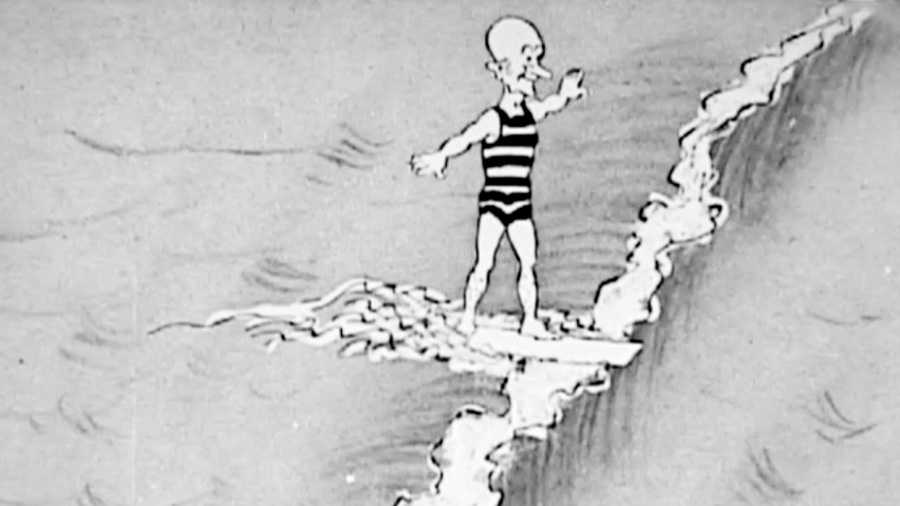
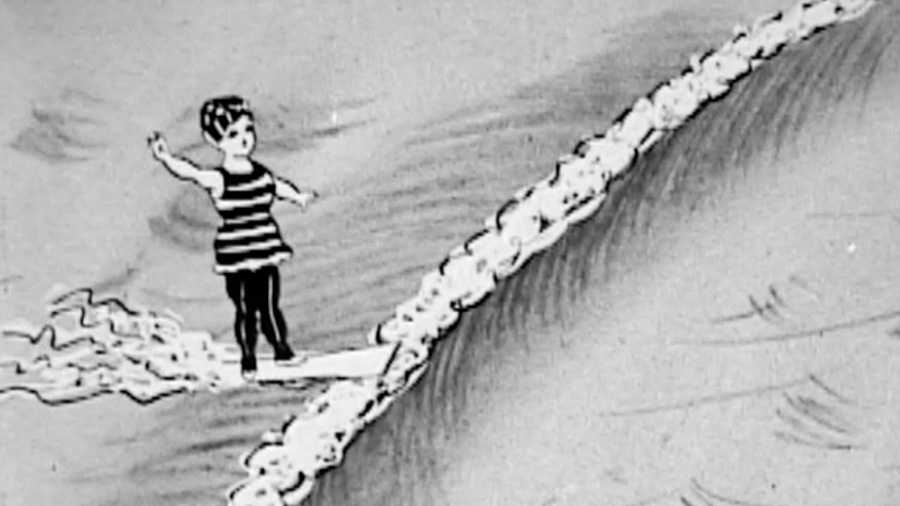
In the clips listed above, the one I most enjoyed revisiting was the Fantasea intro. A wildly underrated post-Free Ride surf flick, Fantasea was made by Santa Barbara's Greg Huglin and came out in 1979, but my guess is the animation was done a year or two earlier. I mention this because the surf-cartoon/animation choices during the late 1960s and '70s were mostly limited to comedy or fantasy, pick a lane, and credit to animator Rick Sharp for being first to combine the two. His Fantasea intro is a fantasy send-up—except there is no satiric edge, so it works fine as straight fantasy. Although "straight" is maybe the wrong word. My favorite moment is when our loincloth-wearing surfer turns to give us a look at the whole bronzed head-to-toe Chippendale-ripped package, and the sun glints off the nose of his board, chiming sound effect included, to emphasize the adonic perfection before us—this is comedy gold. Gay as the back-corner booths at a Judy Garland midnight club show, to my eye, anyway, making it even more gold!
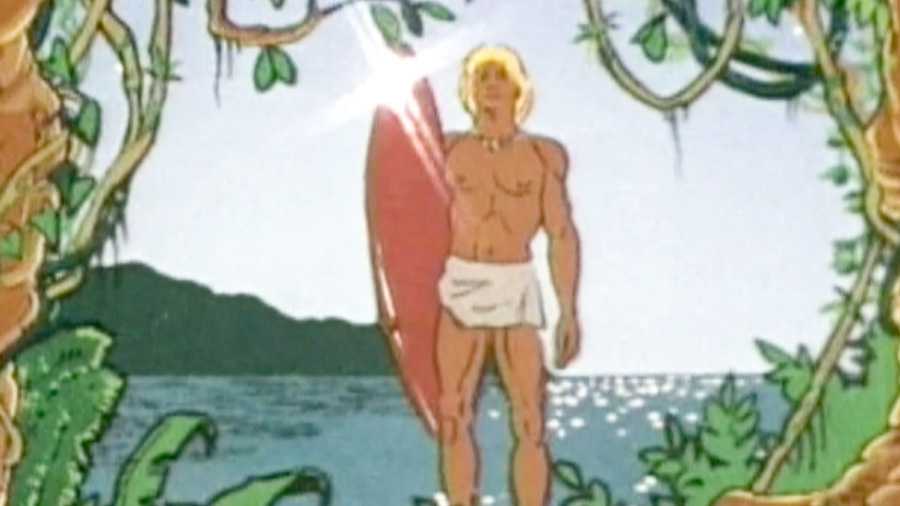
Speaking of which, Arne Wong's Acapulco Gold is the least surfy clip included here, but has an excellent pedigree (it was included in a 1973 marijuana documentary and was featured in Five Summer Stories) and a backstory that would make Harold and Kumar sigh with pleasure, starting with the Vaudeville-soaked soundtrack tune, also called "Acapulco Gold," which briefly snuck into the Billboard Charts in 1967 before getting banned.
Wong, a lifelong San Francisco surfer, picks up the story:
It was in the summer of 1971. A man [producer Bob Grosvenor] asked me to create an animation from a song that was banned for being dangerously subversive. He had seen Karma, my first surfing cartoon. I asked what the budget was, and he said he didn’t have one, but he could pay me with as much weed as I could smoke. I blurted out, "I’ll do it!" I was 21, young and hungry, willing to do anything to do what I love—animate!
I immediately went down to Kelly’s Cove, my home break in San Francisco, and enlisted anyone who could draw or hold a brush. I had no shortage of volunteers. For six months, seven days a week, I had a studio full of very stoned artists working on this project. I spent all my spare time working on this film between surfing and going to City College. My contact would arrive every month with another brick of Acapulco Gold, and drop it onto the table in the center of my art studio. We would be working till the wee hours of the night, laughing hysterically, rolling gigantic doobies, inking and painting on the wrong side of the cels, listening to Traffic's The Low Spark of High-Heeled Boys over and over.
When the feature film was completed, it was shown in local junior high school auditoriums. It couldn't be screened in the theaters—it was all underground and word-of-mouth. Flyers were posted at the beaches and wherever teenagers hung out. The schools themselves never knew what the film was about; they thought it was just movie night for the local community. The audience was teenagers screaming and hooting throughout the movie, stoned out of their minds. Through that purple haze of smoke, I saw my whole life before me: surfing by day and making cartoons by night.
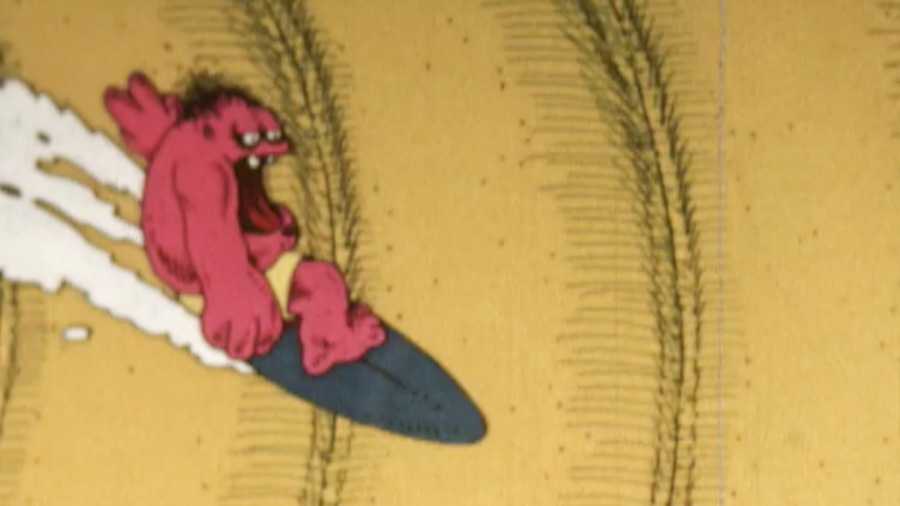

Last thoughts:
Goofy's massive hack at 7:38 on Hawaiian Holiday—look closely, he switches stance halfway through, and in fact Google tells me that's how we ended up with the term "goofyfoot."
There was a kid at my high school who made these incredible little animation flipbooks, like this, except of surfer's doing aerial 360s and such. Steve Carranza, was that you?
Same as Acapulco Gold, it took six labor-intensive months for Rick Sharp and a pair of assistants to make the two-minute Fantasea clip where pretty much nothing happens except our guy wakes up in the jungle, yawns, grabs his board and paddles out. And yes, the surfer is modeled after Shaun Tomson—although Shaun would sooner drop all six of his Gunston 500 first-place trophies off Ventura Pier than sleep outside on the ground.
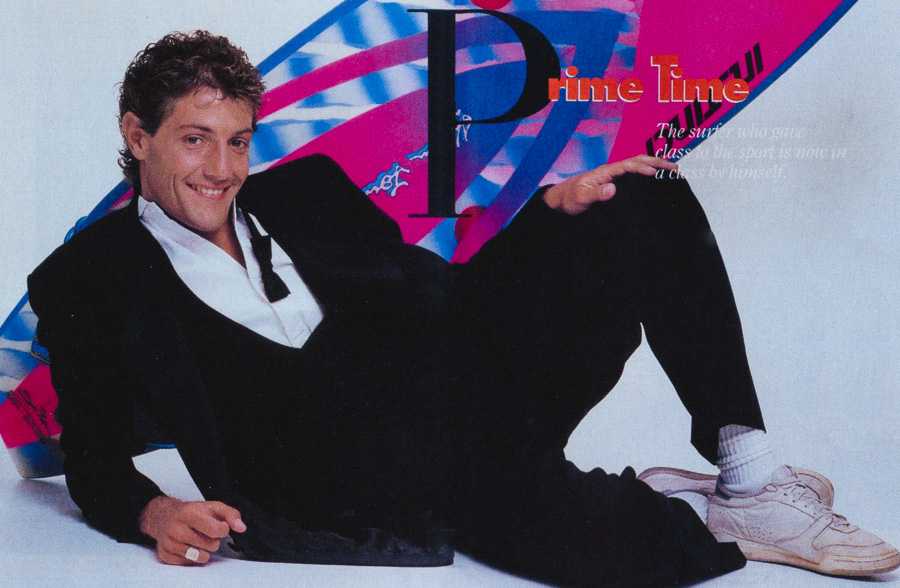
Thanks for reading, and see you next week!
Matt
PS: I keep finding more vintage clips of Corona Del Mar, and here we've got a short but sweet one from Greg MacGillivray, filmed in 1962, when the future auteur was just 16. Some cautious riding going on there, and no wonder, the waves—or "foamers," in local argot; this only happens a few times a year and "Pray for Foamers" I believe is still graffitied on a jetty rock down there somewhere—angles into the jetty. Photographer Woody Woodworth (seen below, in yellow and orange trunks) wrote about Corona Del Mar jetty in a 1974 issue of Surfer.
On bigger days, all eyes were upon it, for large south swells would come crashing over the rocks, and you'd see boards and rafters working their way shoreward for 150 yards, the distance of the jetty. It was a big thing to an "end rider" (end of the jetty, naturally) in those days. If you were a board surfer, you had to be good or you wouldn't have a board long. Back then, you could buy a seaworthy raft for $14, which was a far cry from the $140 they used to get for surfboards. As the boards got shorter [in the late '60s], the raft began to take command. Because the takeoff on a big wave is so critical out there, most guys on small boards can't get into the wave before getting blasted out of their trunks by the explosion off the jetty. The rafts, on the other hand, being more buoyant and stable, can be paddled right to the tip of the jetty and the blast will rocket you out onto the shoulder. [Still, after a big swell] it wasn't unusual to see the remains of several rafts strewn along the seawall and the beach after getting popped on the barnacle-encrusted rocks.

[Photo grid, clockwise from top left: "Rocket 88" surfer; back-to-nature surfer from "Fantasea"; Goofy surfing in "Hawaiian Holiday"; title card from "Surf Wars"; Bobby Bumps and dog Fido; hula dancers from "Hot to Trot." Three screengrabs from "Bobby Bumps." Money shot from "Fantasea." Surfer from "Karma." Dog from "Acapulco Gold." Shaun Tomson, 1985, by Greg Gorman. Foamers at Corona Del Mar. Woody Woodworth and Mike Mulkey at Corona Del Mar, 1971.]